There are many misconceptions and myths regarding livestock, especially beef cattle. Beef cattle are being blamed today for everything from global warming to heart diseases, which are actually unfounded. Although they do produce methane gas, and they do contribute to high cholesterol and heart diseases if you eat a lot of them. Methane produced by livestock only account for 2.5% of the total greenhouse gases in the atmosphere. Moreover, some green pastures for feeding cattle also sequester carbon dioxide and release oxygen, just as a forest does.
![]()
![]()
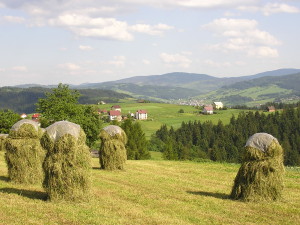 Eating too much meat is a problem which is associated with the developed world. Also, beef that grows in the feedlots are fed fattening food and supplements. Countries belonging to the third world, like the countries in Africa, Asia, and Latin America, on the other hand, are under fed, and the health of children with a lack of nutritious food suffers a great deal, because the children do not get enough meat or milk in their daily diet.
Eating too much meat is a problem which is associated with the developed world. Also, beef that grows in the feedlots are fed fattening food and supplements. Countries belonging to the third world, like the countries in Africa, Asia, and Latin America, on the other hand, are under fed, and the health of children with a lack of nutritious food suffers a great deal, because the children do not get enough meat or milk in their daily diet.
Agriculture and livestock play an important role in producing food and economic development of a country. Livestock provide food for us directly, as well as supply the basic inputs for the farms. In smaller farms, where using tractors becomes useless for the farmers, livestock can provide power for tilling and providing traction to the land.
Feeding beef cattle
Beef cattle feed can be one of the most expensive inputs that a cattle farmer needs. However, feeding animals the right kind of food with proper nutrients is vital for a successful beef production system. For effective feeding and cattle management, an understanding of basic nutrition and digestive processes of ruminants is necessary.
Digestive system
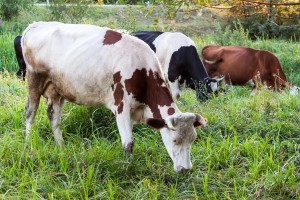 Ruminants can absorb nutrients form plants by fermenting it in a special stomach. This group includes animals like cattle, deer, sheep, goats, and other similar species of grass eating animals. Digestive system of these animals allows them to use roughage such as grass and hay as the major source of energy. They have large digestive organs, filled with fluid, at the beginning of their digestive tract called the rumen. The rumen contains a large number of bacteria and protozoa. Much of the initial digestion is done by these microbes in the rumen.
Ruminants can absorb nutrients form plants by fermenting it in a special stomach. This group includes animals like cattle, deer, sheep, goats, and other similar species of grass eating animals. Digestive system of these animals allows them to use roughage such as grass and hay as the major source of energy. They have large digestive organs, filled with fluid, at the beginning of their digestive tract called the rumen. The rumen contains a large number of bacteria and protozoa. Much of the initial digestion is done by these microbes in the rumen.
These microbes are able to break down the main components of roughage such as proteins, starch, hemicellulose, and cellulose for the animals. When animals eat, the food gets passed down through the esophagus to the
reticulum, which acts as a holding area for feed. The omasum absorbs water from the mixture of fluid and feed before it flows into the true stomach. Finally the intestine breaks down and absorbs nutrients from the food using digestive enzymes.
When ruminant animals eat, they take large bites and swallow without chewing, or with minimum chewing. After eating, they stand or lie down to “chew their cud”. This brings back forages into the mouth, up the esophagus, where it is chewed and swallowed again.
Nutrients
There are various classes of nutrients that the animals need, and the need of nutrients depend on the specific requirements of the animals. Each nutrient fulfills a specific roll in the metabolism, growth, and reproduction of the animal in their life cycle. Nutrients are classified by their chemical structure and role in metabolism.
Energy
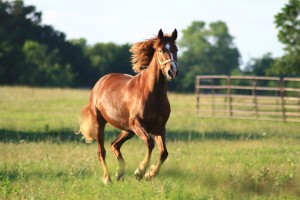 Energy from food gives the animals the ability to move and work. In beef cattle rations, energy is usually expressed as % Total Digestible Nutrients (TDN). Work includes growth, reproduction, lactation, feed digestion, and movement. Nutrients for energy accounts for the greatest portion of the food cost. Sources of energy are starches from grains, roughage, fats, and oils.
Energy from food gives the animals the ability to move and work. In beef cattle rations, energy is usually expressed as % Total Digestible Nutrients (TDN). Work includes growth, reproduction, lactation, feed digestion, and movement. Nutrients for energy accounts for the greatest portion of the food cost. Sources of energy are starches from grains, roughage, fats, and oils.
Protein
Proteins build up the body, which is composed of amino acids. It is usually measured as % Crude Protein (CP). Protein is essential for growth, reproduction, and lactation. Some proteins are digested in the rumen, and some pass through to the intestine. Roughage provide protein for animals. Protein is also available in leguminous plants and beans in large amounts.
Vitamins
Vitamins are active components of food that fights diseases, and are essential for normal growth of healthy animals. Vitamins are essential for health and endurance of animals against extreme weather. Vitamins for beef cattle nutrition include Vitamin A, Vitamin D and Vitamin E, and are present in fresh forages. Silage and grains contain low amounts of vitamins, as most of the vitamins are lost in the fermentation processes.
Minerals
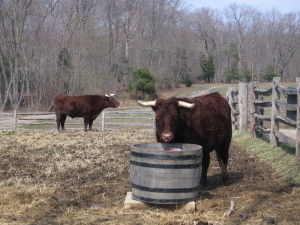 Minerals are necessary for various functions of growth, digestion, bone structures formation, lactation and reproduction. Major minerals that are required in large amounts are salt, calcium, magnesium, potassium, and phosphorus. Minerals that are required in small amounts include copper, iodine, zinc, selenium, and sulfur. The type and quality of the feedstuffs can affect the mineral contents in the feed. Supplementing livestock feed with minerals may be necessary. Deficiency of minerals can cause disease in animals.
Minerals are necessary for various functions of growth, digestion, bone structures formation, lactation and reproduction. Major minerals that are required in large amounts are salt, calcium, magnesium, potassium, and phosphorus. Minerals that are required in small amounts include copper, iodine, zinc, selenium, and sulfur. The type and quality of the feedstuffs can affect the mineral contents in the feed. Supplementing livestock feed with minerals may be necessary. Deficiency of minerals can cause disease in animals.
Problems caused by deficiencies of some minerals
Some Symptoms of Mineral Deficiencies |
|
| Mineral | Deficiency Symptoms |
| Calcium | – poor growth – bowed leg bones – brittle bones |
| Phosphorous | – poor growth – craving for wood, hair, soil – poor conception rates |
| Magnesium | – muscle tremors – staggering, convulsions |
| Sodium (salt) | – poor growth – chewing or licking of wood |
| Selenium | – weakness, inability to stand |
(Table credit: Basic Beef Cattle Nutrition)
P. S: -Try our feed in a box for a well balanced nutrition for your livestock, which you can buy directly from us according to your needs.
Source: Sustainable Livestock Nutrition


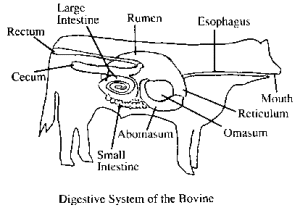


Thanks for mentioning that animal feed provides your animals with the ability to grow and lactate properly. My uncle recently purchased some cattle that just gave birth, and he needs to make sure that the newborns are properly nourished so that they can be sold once they have grown up. I’ll let him know that buying the right feed will help his female cattle produce sufficient milk.